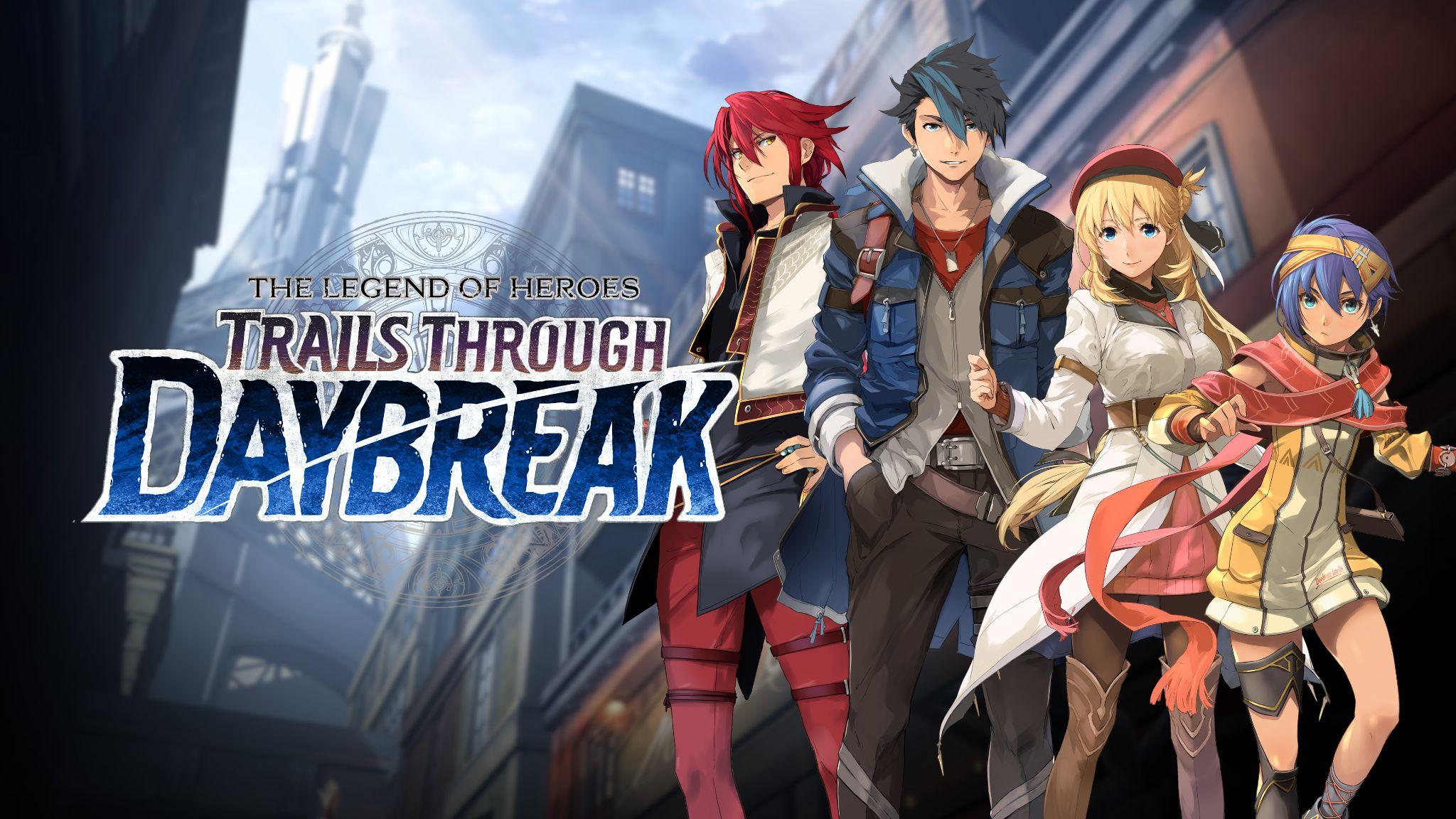I’m currently on a binge through the Trails series to catch up. In the last year, I’ve played through the Trails in the Sky trilogy and Trails From Zero. I’ve not yet touched any of the Cold Steel quartet. And so I’ve been frustratingly unable to review the recent Trails games such as Trails Into Reverie, as it’s right at the leading cusp of the series’ interconnected and ongoing storyline – there’d be spoilers galore, and I hate that.
So it was with great relief that my internet research uncovered that the newest in the series Trails Through Daybreak was not only the beginning of a new subsection, but also a completely new second half of the overall series, where Reverie had been the culmination of the first. It’s being billed as the new perfect jumping-in point. So jump in I did. We will evaluate later if we agree with this marketing push.
Therefore this reviewer is both new to the fully 3D and recent Trails games, but has also played four of the earlier games in the series – so I have a good amount of series knowledge and experience. It’s a funny little halfway point to be. I think I will be playing both the backlog and the new games concurrently from now on, as I have Trails From Azure (the sequel to Zero) sitting on my Switch ready to go, and I simply have to get back to Lloyd and co soon.
Somewhat uniquely in the JRPG market, Trails is an ongoing series with an ongoing story. Unlike Final Fantasy or virtually any other series you could name (with the possible exception of Falcom’s other series Ys which is also ongoing, but far more episodic) it isn’t made up of individual stories with different worlds and characters each time. It’s the same world, often many of the same characters and cameos, and each one is just a year or so on from the last. This makes it a difficult series to get into.
Cue Trails Through Daybreak. I imagine Falcom execs realised they needed a new jumping-in point after Reverie was so difficult, very aware that new players haven’t really been joining in droves since the first Cold Steel. Daybreak’s reset cuts through the need for vast series lore, the player’s memory for characters, places and names, and restarts. At least sort of. At the same time, for an uber fan, it still manages to carry on the story, with a new chapter and new characters, but more cameos, places, continents and politics that you will know.
Van Arkride is a Spriggan, a kind of shady mercenary with only his moral code to guide him. He’s a creaking twenty-four years old, far more established than most of Trails’ lead protagonists, who are often still in puberty. Still, a Spriggan is essentially a Bracer/Police etc so it’s the same good-natured mercenary position you’ll be playing as in previous titles.
For all his protestations of taking shady jobs close to illegality, his workload is virtually the same as every previous Trails game – he is a Bracer in all but name, and as you’ll come to see, Daybreak is Sky, is Zero, is Azure and not much is any different.
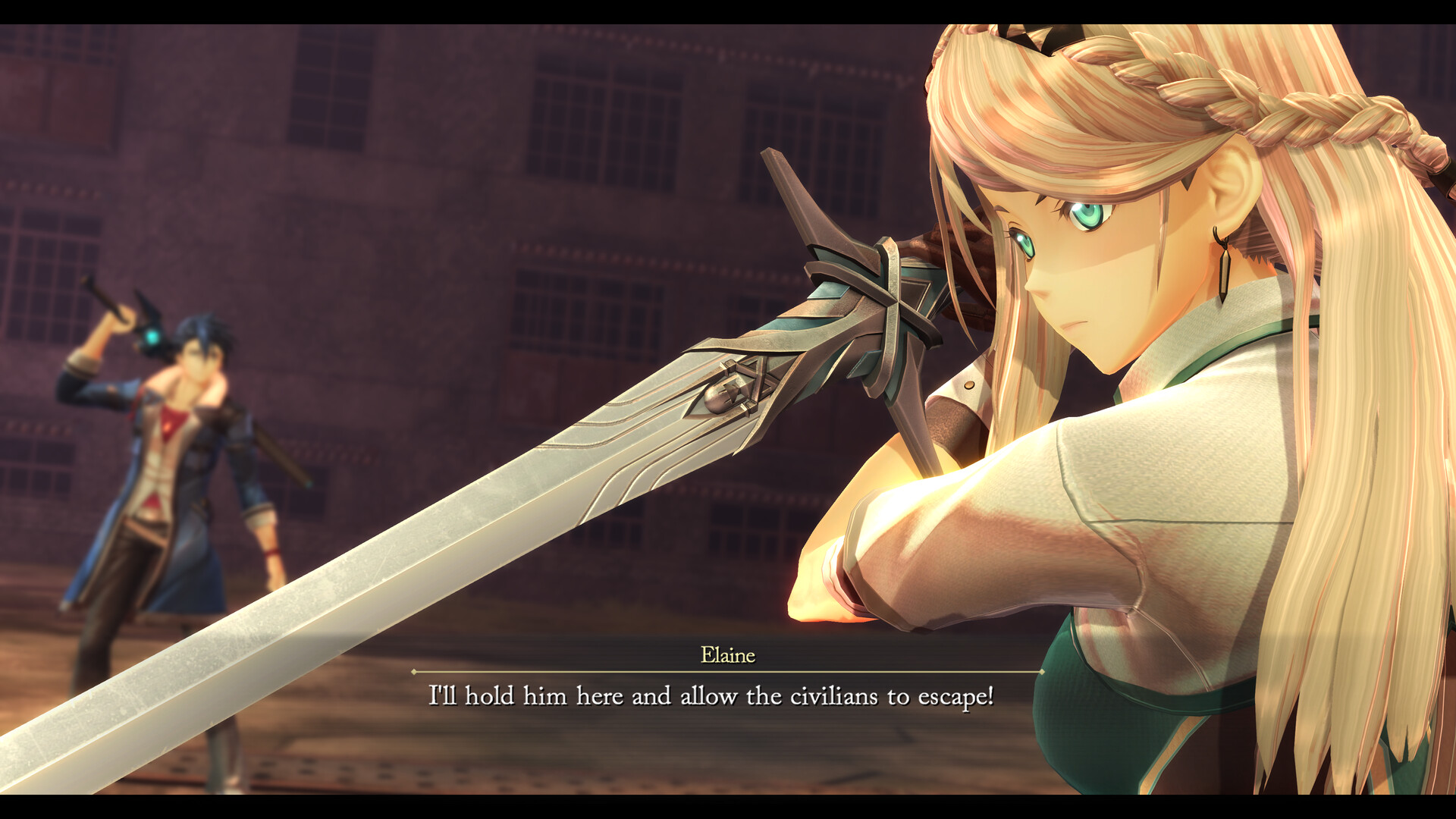
Trails Through Daybreak’s story involves dozens of interconnected spriggan jobs that get Van quickly involved in a college girl’s search for family heirlooms that are causing chaos. Agnes Claudel is joined by a thirteen-year-old Jaeger, a kind of nomadic warrior, after she’s kicked out of her clan; is joined by a young thug on a mission of revenge, is joined by so on and so on. Structurally it’s five chapters plus prologue and ending – so virtually identical to Trails games gone by.
Where the narrative strengths lie in the Trails series, and certainly in Daybreak too, is its far-better-than-average anime characters, dark backstories, and deft handling of around a dozen interconnected political groups from monarchies to businesses, from mercenaries and private armies to street-level gangs, from nations to international terrorists. Many scenes delve into the political situation of Calvard where the game is set, and comparable different ways of doing things in other countries. Even within your allies, you deal with Bracers, Police and various criminals and Van must navigate a perilous route through them and their conflicting agendas.
It makes the game and the series as a whole a more adult-themed affair than the sort of young-adult-aimed mainstream. However, it is very familiar. If you have played the previous games, this one is not only going to feel cut from the same cloth, it’s going to feel identical. If it ain’t broke don’t fix it, right? It’s certainly a fun structure that translates just as well in 2024 as it did in 2004, but I lament what a series it could have been by now with a little more innovation. Spending time on story, but cutting costs on cheaper graphics and the same basic structure every time will make for a quicker and cheaper development cycle – this is how you churn a dozen mainline games out in the same period as Final Fantasy has managed only four mainline entries, an MMO and a handful of lower budget sequels.
One other thing that is disappointing is the male gaze aspect of it all. Plenty of JRPGs have skimpy outfits and sexist writing, but Daybreak is kind of relentless. Every female character is commented on, every few scenes has someone pointing out outfits or boobs, or going to the baths, or bikini scenes, or a strip club. There is good character writing in there, even for the female characters, but it’s under a thick layer of fan-service. And while very little is actually shown, beyond a few jiggles, it’s far more adult than its rating might otherwise allude. There’s also a homosexual character who is written in a very homophobic manner, used to scare straight guys for example.
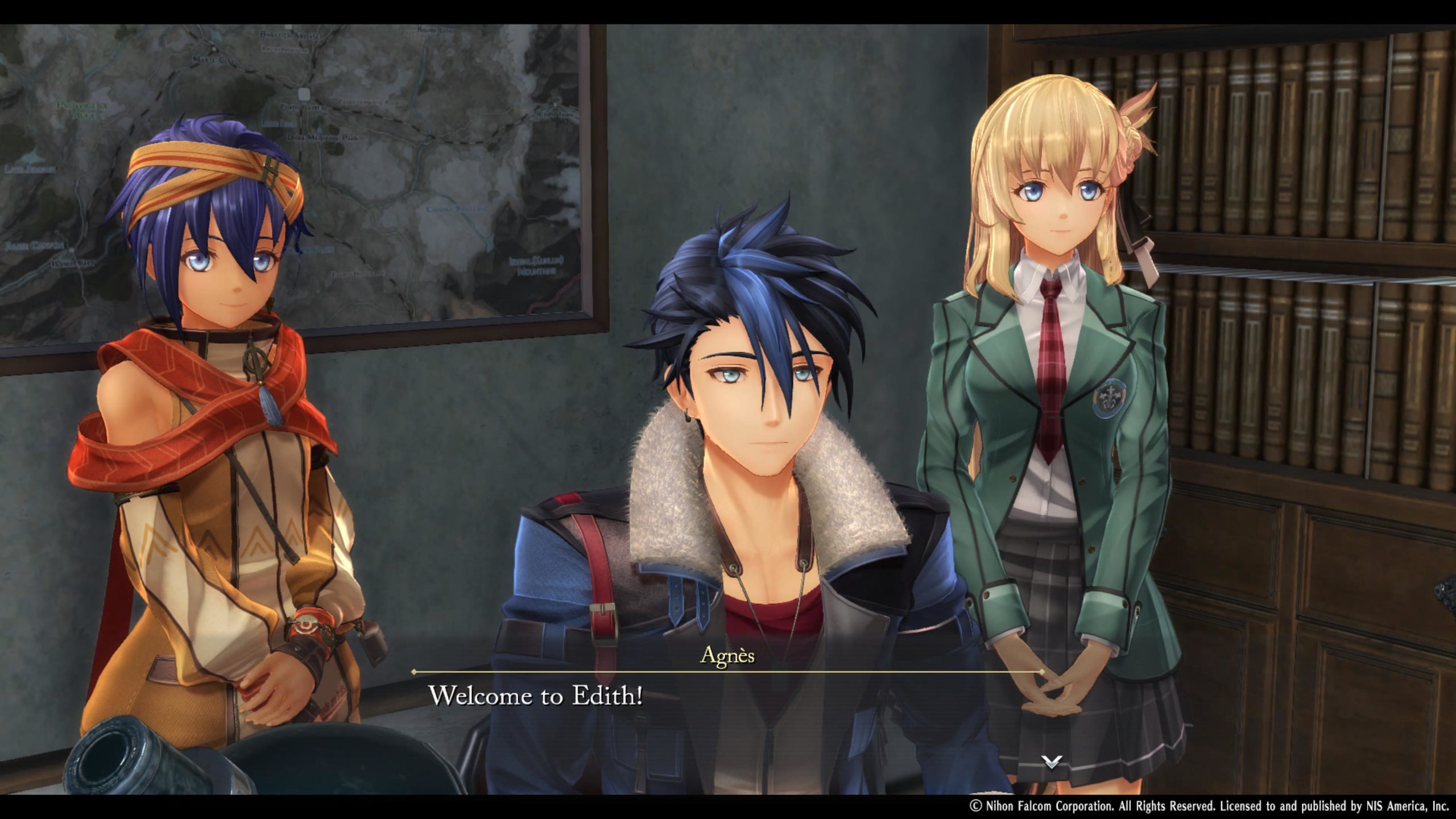
The Arkride Solutions Office, quickly staffed by you and new allies as you progress, take on dirty jobs (side quests) that supposedly skirt close to legality. Some need to be found on bulletin boards but the majority come naturally as you explore the city-hubs and locations and talk to NPCs in the mainline quest. As with previous titles, the side quests are kind of essential as without them you miss lots of build-up to the main quest, plenty of background info, and character backstories, and you end up vastly under-levelled for the main bosses.
You’ll accrue ‘free time’ periodically by doing all the side quests in each chapter. Free time is a very Persona-style addition to the series, which I think began in the Cold Steel series, essentially giving you time to spend with party members to increase the bond between them and Van. I’m not sure if any of them progressed as far as a date, or romance options, but it’s a nice addition that I made use of to increase team stats and bag the associated trophies.
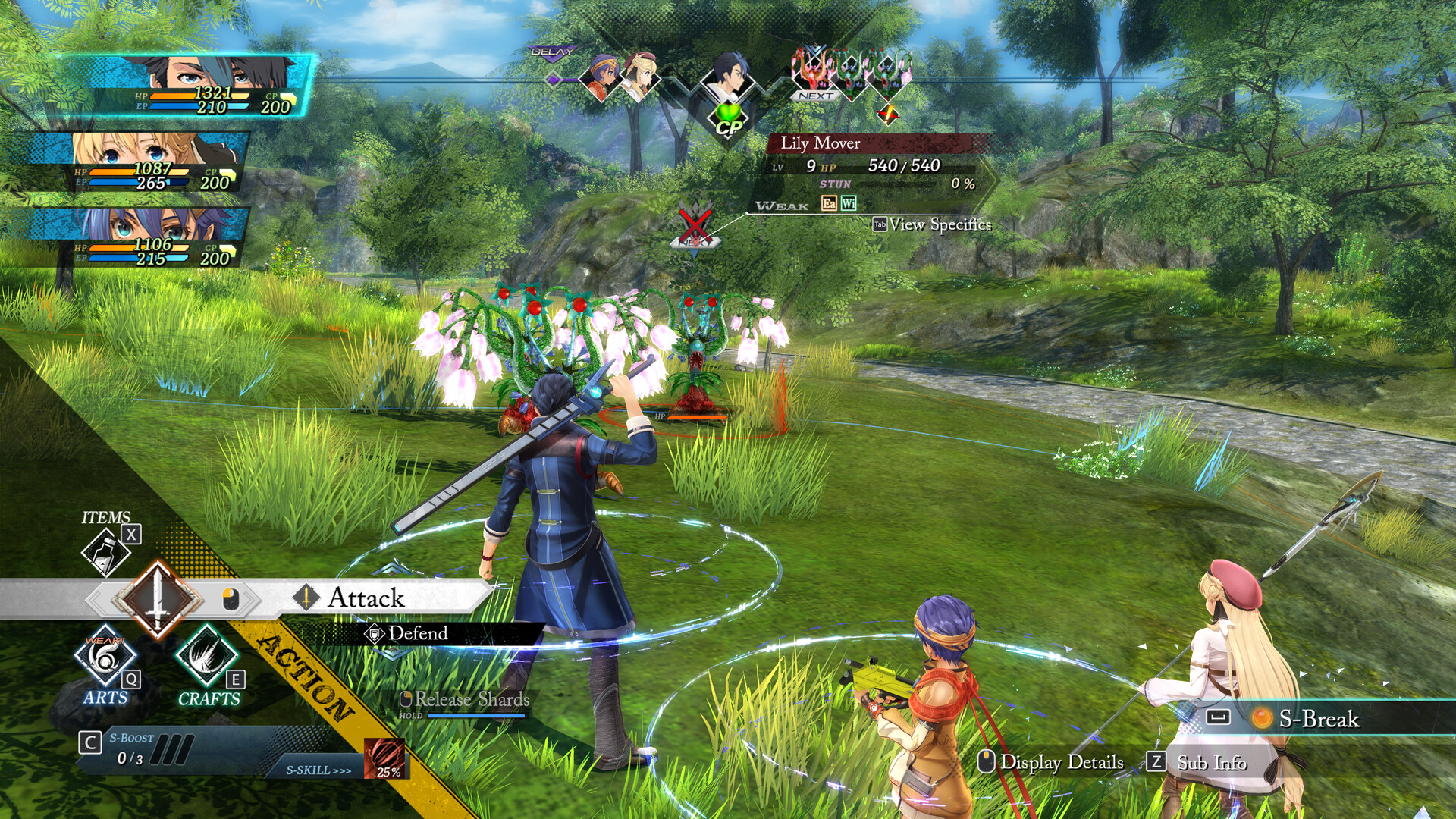
Trails Through Daybreak might be the first JRPG I’ve played with two virtually complete combat systems working in tandem. Daybreak can be played using the Ys-like field system, a more action-focused real-time combat system, or the more Trails staple ‘command’ system, which is turn-based and features tactical placement. It does force you to use one or the other at times, and it’s turn-based all the way in bosses. The Ys system is also penalised by really low damage output, making the normal Trails system the better for damage, but the Ys system is quicker, especially for low-level enemies, where a whole turn-based battle would take unnecessary extra time.
So the Ys system allows you to explore a dungeon with any character, use their weapon in real-time (or magic in some cases like Agnes) and do fun timed dodges out of enemy range. You can stun enemies and you can do a power move. But that is about the extent of it. Once you stun an enemy it makes more sense usually to press square (to drop a shard in the game’s lingo) and enter turn based on the same enemy.
The Trails system is going to be familiar to those who’ve played the Cold Steel games, and just ditches the grid from the even older games. You fight in a turn-based system with a timeline of turn order across the top of the screen, and virtually every new system that’s ever been introduced to a Trails game is here all at once.
Positioning has always been important to the Trails combat systems as you can avoid where you know spells will hit, or spread out your team so they can’t all be targeted, but Daybreak has a nice reward for staying close to teammates. Close proximity allows for linked SCLM attacks which are like adding a second attack for a teammate on virtually every turn if you’re using normal attacks, and enhancements for magic too. I used this system so extensively that it felt almost like a cheat, to be able to get two actions every turn.
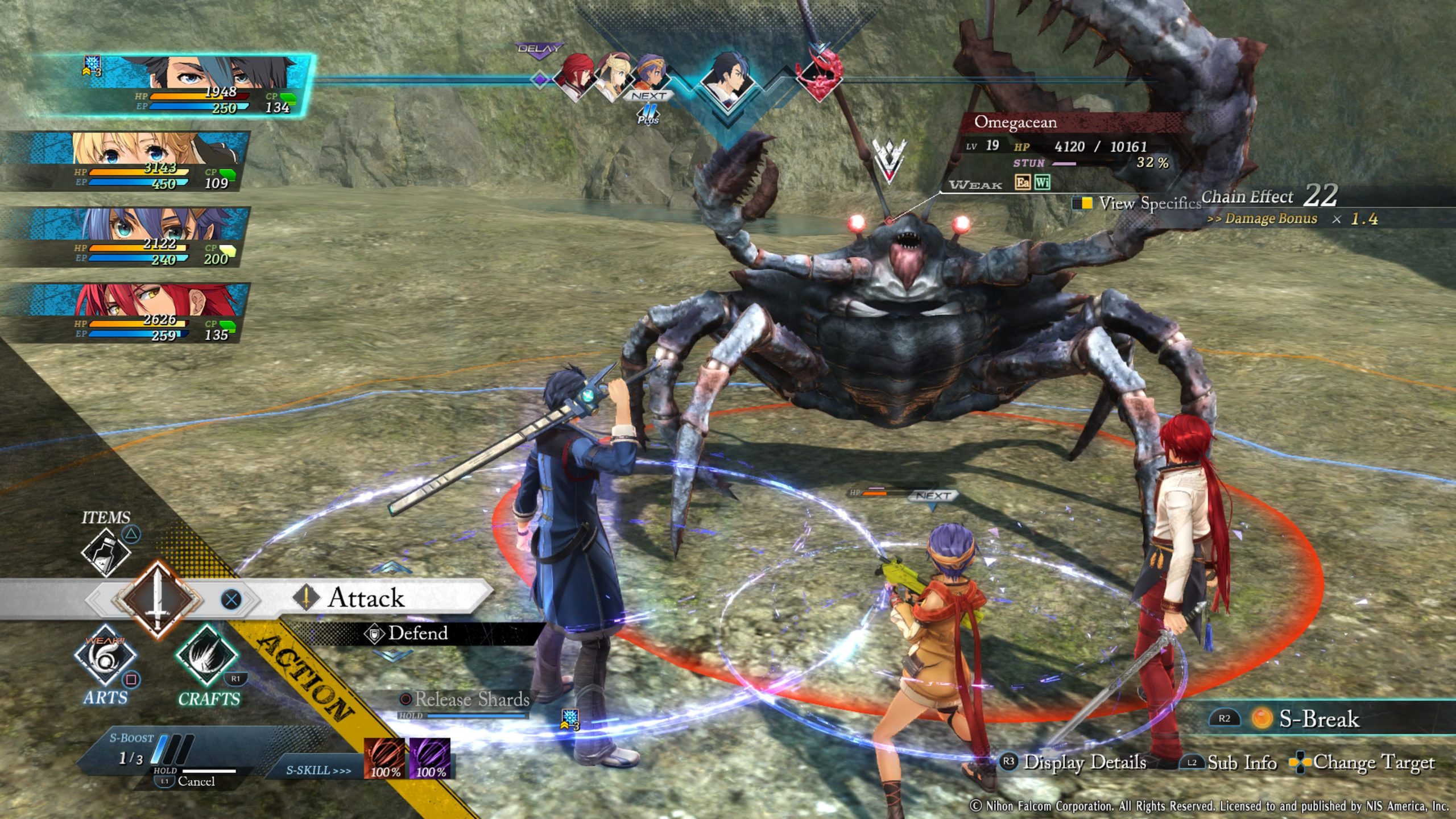
You have normal attacks, magic attacks, craft-point attacks, and then massive over-powered S-craft attacks that blitz the whole arena. Using positioning to get double attacks, driving an enemy to a stun status, and then unleashing saved-up S-Crafts on them can do massive damage and is often the key to victory. Another part that feels almost too empowering is Shard Boost, just clicking L1 a few times at the start of battle can double and sometimes triple your damage output based on your orbments.
The orbment part of the game, the equivalent of materia or magic skill boosters, is very different in Daybreak than it is in the Sky or Zero games. In those titles adding elemental magic to your orbment gave you magic skills to use, but it was governed by a frankly too complicated system of increasing the power of each element to give you higher-level magic. In Daybreak, this system is radically redefined – adding the elemental magic to your orbment adds passive skills to your character, that most often trigger when launching a shard in battle. Things like extra strength, regen, more EXP etc. Magic skills and spells are no longer tied to the same system – they are controlled by the operating AI or ‘Driver’ you have on your orbment, giving you a pre-decided set of spells.
Thankfully each Driver also comes with a couple of slots where you can buy specific skills or ‘plugins’ regardless of other elemental stats. I filled these with heal and revive spells so that everyone could be a healer in a pinch and went all-out attack on my other magic. All of this means that orbments are both a new thing to relearn for someone coming in where I was (can’t comment on how different this system is from Cold Steel), but also refreshingly simple and much more intuitive than they’ve been in past games.
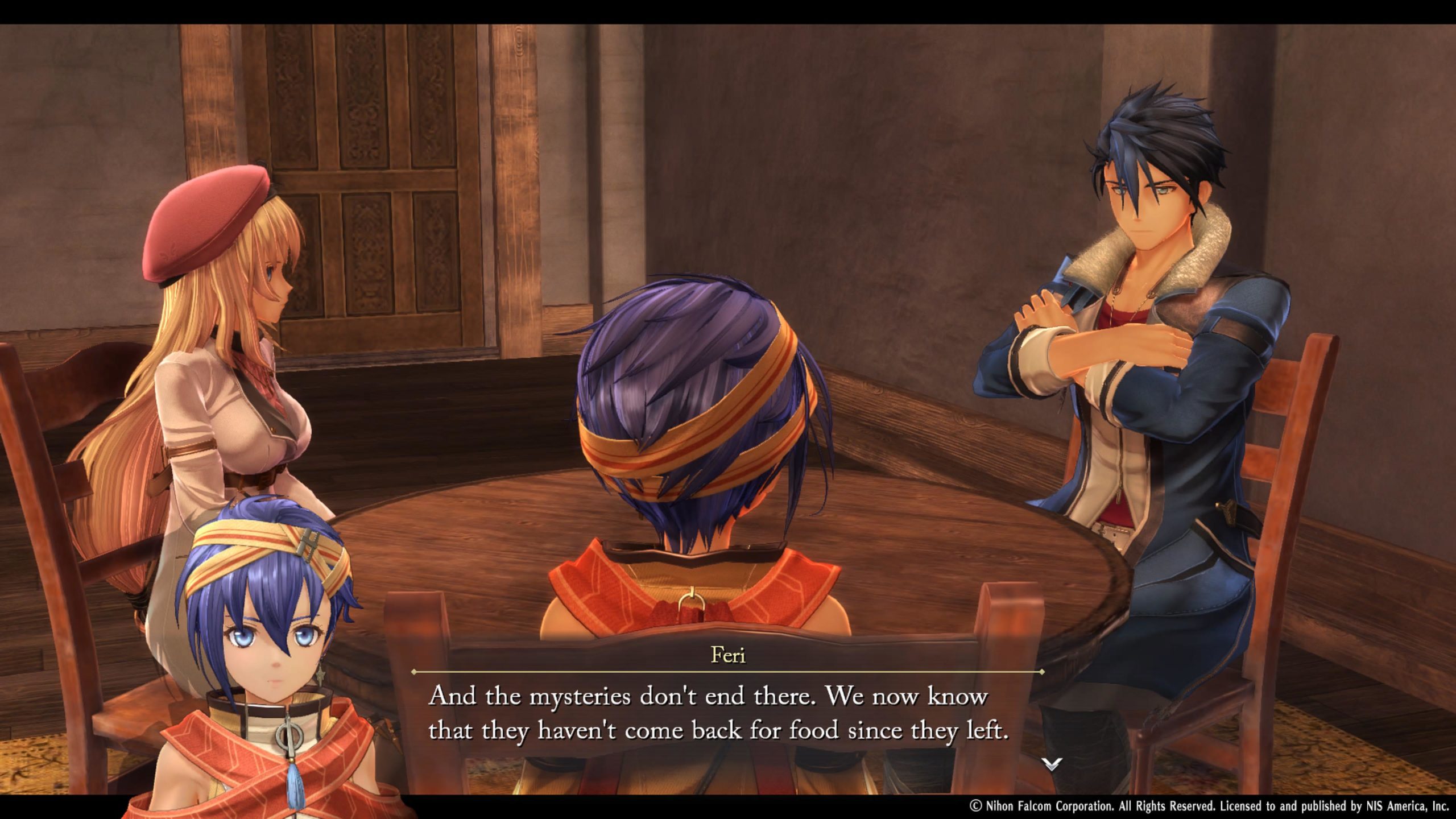
While Trails through Daybreak did come out in Japan in 2021, the graphical limitations on display are not explained by three years of progress in this industry. Daybreak uses a new engine that is a little prettier than previous Falcom games, but overall you’d be forgiven, coming clean to the game, for thinking it came out on the PlayStation 3 more than a decade ago. You’d be forgiven for not believing there’d been a graphical uplift since the Cold Steel games – it’s hard to discern.
But at the same time, it feels like this is an example of where graphics don’t really matter. The writing is so good that the graphics are just providing the necessary level to tell the story. The difference between PS4 and PS5 was pretty much indeterminate as well.
Some of the music and sound design was quite good and a little more memorable than past outings, but the English voice-over can drop out without warning, mid-conversation. If you’ve had it on auto, that’s not helpful. Going between the two isn’t going to be a deal breaker for any JRPG fan, but it was a little jarring how often and unexpectedly it happened. It’s rare that it happens in an actual cutscene, but there are hundreds of conversations where a few lines are voiced and nothing else, or just a bit-part character, and not Van!
To write this review Finger Guns was given a code for the PS5 and PS4 versions of Trails Through Daybreak, but when playing the PS5 version we were subject to constant loading issues and crashes. Every few scenes a new area would need to load and the game would crash to the Home screen. Every time you reloaded the same bit, it would happen again. The only way to stop the crash and to progress was to play the PS4 version to the same point, go past the crash, save, transfer the save data to the PS5 version and then continue. Until it did it again a few scenes later. As of publishing date, this seems to have been patched.
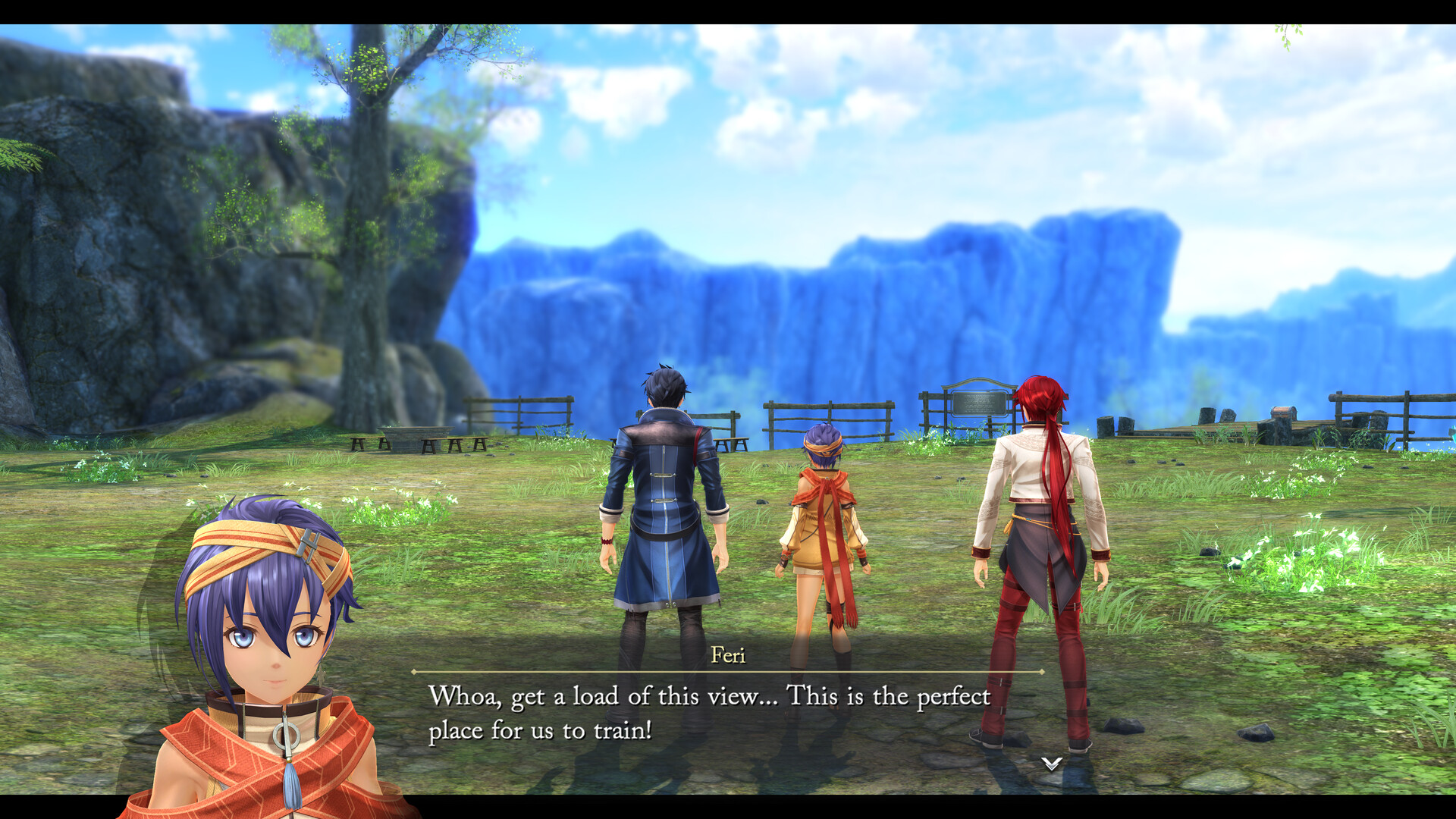
So, now that I’ve played it (and I’m confused by playing in multiple parts of the timeline) was Daybreak a good starting point? Was it even a viable starting point?
I’d say Daybreak, like its protagonist, is more mature and established than comparable protagonists in previous games. As a Spriggan, Van doesn’t have to be a do-goody Bracer, nor a by-the-book detective, and it feels like the game itself is doing the same thing, shedding the structure a little, not worrying about learning the ropes. Most players will have gone through many Trails games at this point, so it was refreshing not to have to learn the whole process of being a nice merc all over again.
The story features many things that will be familiar to long-term players, and callbacks are everywhere. But they also aren’t intrusive. There are a few returning characters, but pretty much everything you need to know is explained, in more detail than necessary, in the text. All told, I do think this is a pretty good jumping-in point, but if you are anything like me it’ll just make you want to go back and play the other games, and if you’re going to do that, why not just start with Sky? It’s only made me even more committed to starting the Cold Steel series when I get a backlog lull.
For what was essentially to me just a glow-up to a structure I’d already enjoyed immensely in Trails in the Sky and Zero, it was wonderful to just play the same thing in 3D. That said, it really is the same thing, structurally, party-wise, story-wise – if you’ve played those games, this is practically the same. I’m glad I put a few months between each one I tackled because considering how much of a copy-paste this is, I could see myself getting series fatigue quickly. But if it’s a structure that works, why change it, right?
Trails Through Daybreak takes the series to new heights of drama without losing any of the series’ strengths or structure, and features a fun double battle system that somehow doesn’t get in the way of itself. It’s also a viable jumping-in point that hasn’t come along in a while for those looking to dip their toe into this long-running series and finding it daunting. The dawn of a new era.

Trails Through Daybreak is available July 5th on PlayStation 5 and PlayStation 4 (review platform), Nintendo Switch, and PC via Steam.
Developer: Falcom
Publisher: Falcom
Disclaimer: In order to complete this review, we were provided with a promotional copy of the game. For our full review policy, please go here.
If you enjoyed this article or any more of our content, please consider our Patreon.
Make sure to follow Finger Guns on our social channels –Twitter, Facebook, Twitch, Spotify or Apple Podcasts – to keep up to date on our news, reviews and features.
